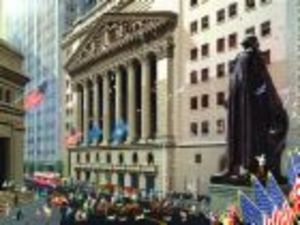There is a new crisis emerging on Wall Street as investors and financial institutions hope that the current trends involving Collateral Debt Obligations or CDOs do not end in the collateral damage witnessed during the savings and loan debacle almost a quarter century ago. Not since then, have analysts been so decidedly cautious and leery of predicting the course of markets. While the savings and loan crisis was an avalanche what is taking place with the CDO market investment vehicles may have more grave consequences.
While the savings and loan catastrophe had far reaching consequences and led to major changes what has not yet been grasped is to what extent a bailout of the CDO marketplace would have. This is at least partially because so little is known about this obscure investment vehicle and in how many industries, a bailout will do harm.
A CDO is a form of asset-secured investment vehicle or structured financial product. It combines different forms of debt from a broad spectrum of securities such as bonds to other security products that are written with mortgage loan guarantees. In whatever for they come, the fund is sliced into segments or slices and sold to investors based on a general set of terms that specify the amount of interest per slice as well as the amount of risk that is involved. In this type of vehicle, the ones with the greatest risk are the first to be reconciled.
While initially not a great of institutions did CDO offerings, the marketplace became somewhat of a glutton during the last few years. Case in point, in 2002 only eighty-four billion dollars was invested in CDO funds. Last year, over five hundred billion dollars was placed in funds secured by collateral. This illustrates an almost six hundred percent increase in four years. Such an increase has not gone unnoticed and without some consequences as collateral value can increase and decrease based on market conditions.
There is an array of CDO types. The first type is a variety called source of funds. These CDOs differ based on either cash flow or market trades. Cash flow CDOs are managed with the goal of paying off liabilities from the interest and principal payments of collateral. Market value CDOs on the other hand enhance investor returns through the buying and selling of said collateral.
The next segment of CDOs differs based on motivation. These funds are bracketed by arbitrage and balance sheets. Arbitrage transactions attempt to gain greatest return for investors between high yield assets and low yield liabilities. Balance sheet transactions are based on the issuers desire to remove loans and other assets from balance sheets.
It is these issues that have birthed a concern with the CDO issues that have been such a stalwart of growth. Institutions developed a set of CDOs that were backed by subprime mortgages and it appears that those loans which served as collateral are beginning to falter and become delinquent; creating a tremendous loss of value for the collateral that backs the CDOs. This concern is being felt market wide as many subprime lenders have to face the music that these high risk loans have proven to be bad investments and consumers were unable to pay back the mortgages.
With home prices on a decline nationally and new construction waning, investors were beginning to be warned by sector analysts that concluded that the riskiest mortgage loans would eventually go into default. What was unknown at that time was when the fallout would begin. Over the last couple of months, Moody, a highly respected market analyst, warned that the slowdown in the housing sector as well as the increasing rate of defaults would create a shaky situation for the CDO marketplace. In the last five years, some CDOs have seen their exposure to subprime debt collateral above fifty percent of their entire collateral security. With that comes an intensified risk aversion equation. What happens is the CDO manager is forced to make a decision between selling assets at a loss or ratings agencies can force a manager to sell assets for lower value. What the market cannot afford is for the entire subprime market to be downgraded.
Bear Stearns, a major Wall Street investment house recently had to issue a billion dollar bailout of a hedge fund based on CDO offerings with subprime mortgages as collateral. With losses mounting, the institution was left with major debt on its hands and felt the need to prop up the fund with the hopes that at some point the market will breathe life back into the fund.
What is not yet known is who will benefit from this fallout if there are to be any beneficiaries. What is known is that a lot of major institutions that used CDOs backed with subprime mortgages face a highly uncertain risk because they decided to take a gamble on top of a gamble.
A foolish decision for sure.


